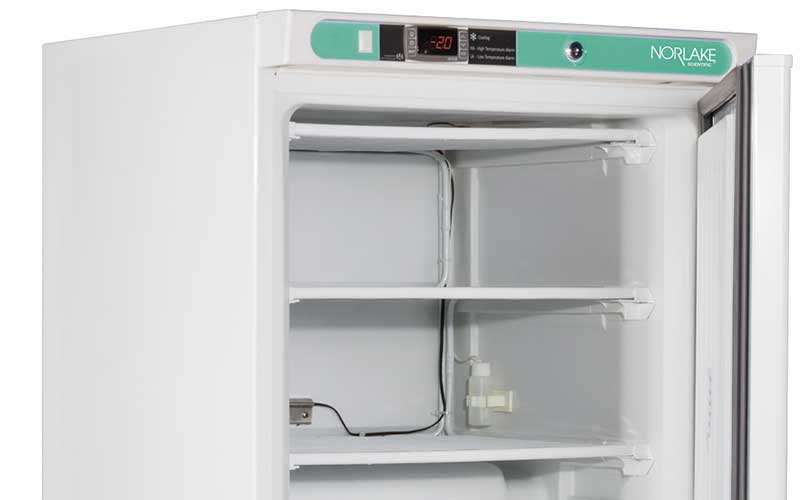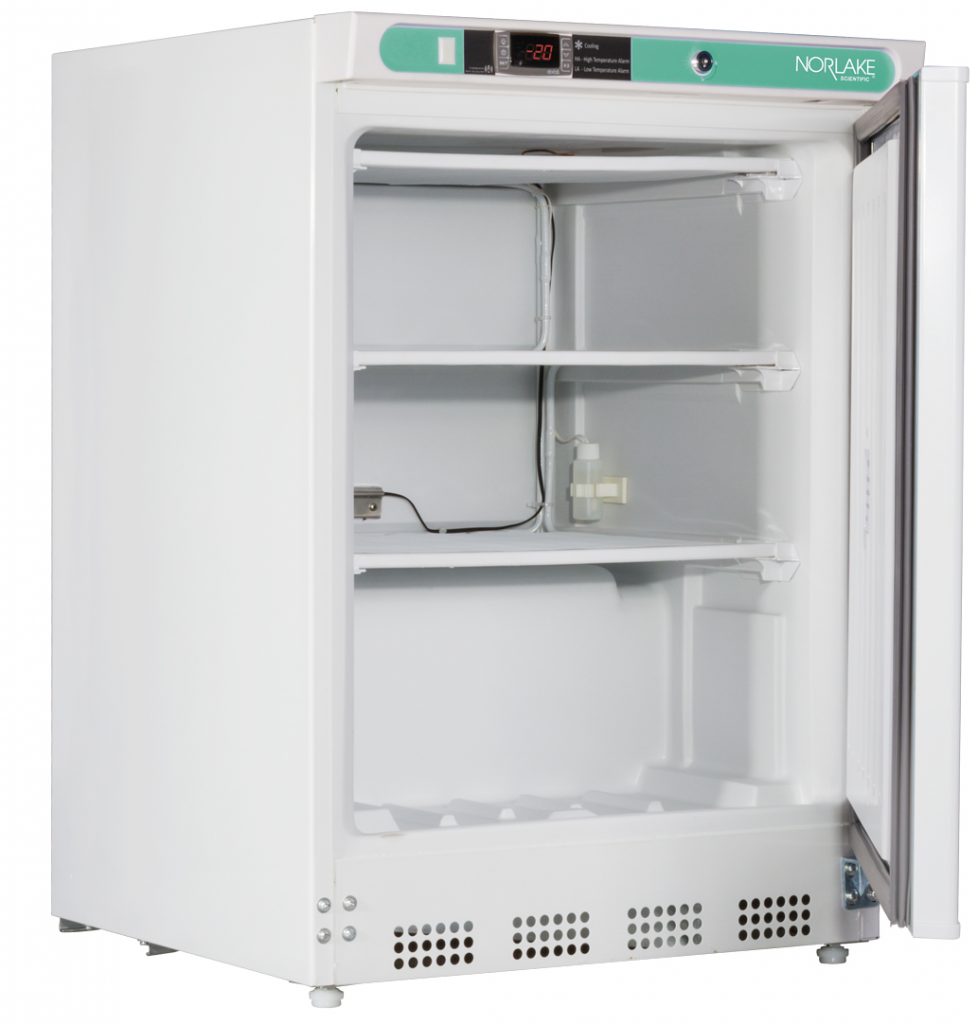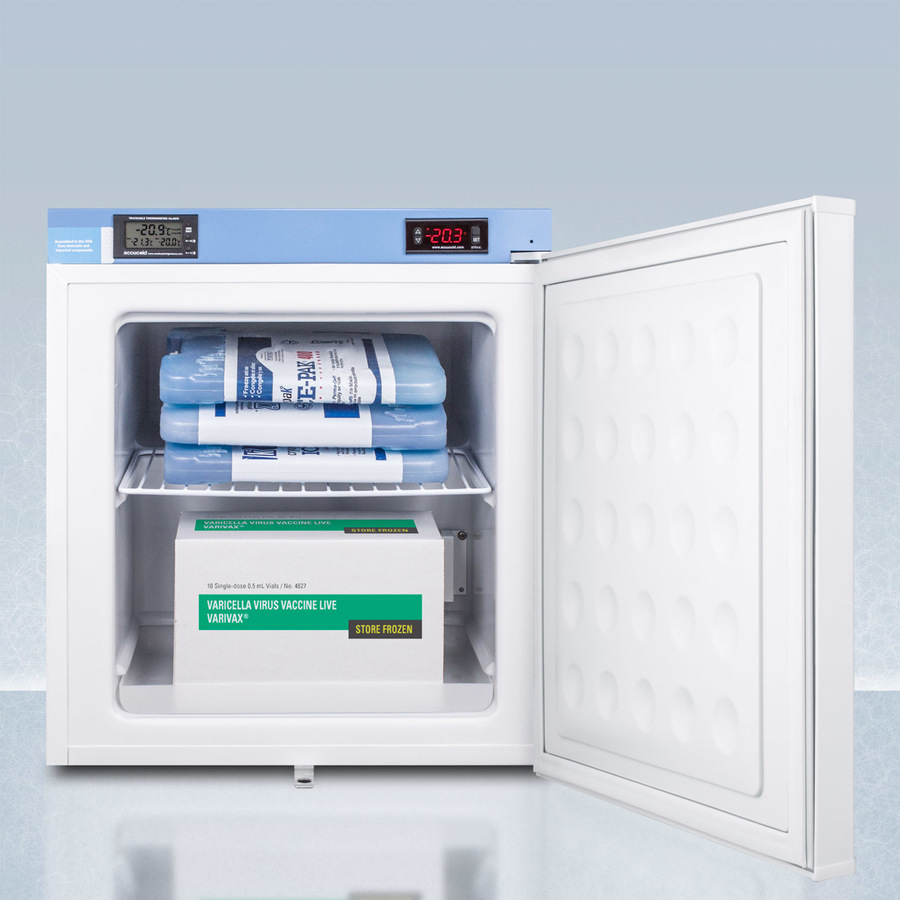
How to Select an Under Counter Lab Freezer
If space is at a premium for safely storing temperature-sensitive pharmaceuticals, lab samples or costly biological specimens, an under counter lab freezer may be the answer. Laboratory freezers are more sophisticated than residential or commercial units. They have features essential to protect contents from temperature excursions. This post provides researchers with useful information to help with their selection process.
What to Consider When Selecting an Under Counter Lab Freezer
First, let’s put the dollar sign in perspective. These units will cost more than residential or commercial units. You (and your accounting department) must compare the cost of the lab freezer to the value of its contents.Proper storage temperatures for many pharmaceuticals, specimens and biological samples are defined. Temperature excursions above or below these may result in losses that in some cases may be irreplaceable.The cost of loss due to freezer malfunction is described in the article Cost of Research Lab Freezer Loss Claims on the Rise.
Start with the Basic Considerations for an Under Counter Lab Freezer
Where will the unit be placed?

If your plan is to place your unit in an existing facility be sure it will fit in available space. New construction provides broader options. Allow space around the lab freezer in accordance with installation instructions to insure proper ventilation of the cooling system.
A nearby power source is essential because extension cords are not permitted.
How much storage capacity do you need?
By definition, these units have limited storage space but there are storage capacity options available. As the user, you will have determined the amount of storage space required over a set period of time.
What’s important is this: a full lab freezer is more efficient than one with empty space.
Do not overfill your lab freezer. See the section below on storage tips.
What are your storage temperature requirements?
Undercounter laboratory freezers range between -15⁰ to – 25⁰C. If you require lower temperatures you should consider ultra-low temperature freezers, although these are not available in under counter configurations.
Critical Features Essential to Protecting Lab Freezer Contents
Temperature Control

Temperature control mechanisms on high-end units are sophisticated. Digital LED display microprocessor controls allow users to set specific refrigeration temperatures within a range such -15˚C to -25˚C for freezers. The available ranges depend on specific models but the point is there is control, and the temperature is displayed on the exterior of the equipment.
Equipment with dial type temperature settings is lower in cost but offers less precise temperature management.
Monitoring and Alarming
More than proper refrigeration selection is necessary to protect valuable products. Malfunctions or a power outage can result in substantial losses. Monitoring and recording storage temperatures are essential to support GLP and to provide backup during audits by the FDA and other regulatory authorities.
Automated temperature monitoring, alarming and record-keeping are critical aspects in selecting your lab freezer.
We present some examples with the note that features vary by model of unit.
Digital thermometer alarms consist of a glycerin-filled bottle containing a temperature sensor placed inside the freezer and connected to an outside control module with alarm.
Optional free-standing temperature chart recorders using internal sensors placed adjacent to or on top of the freezer cabinet provide paper records of temperature history.
Digital LED microprocessor controllers positioned on refrigerator or freezer cabinets and can be adjusted to specific temperatures.
These controllers provide audible and visual alarms of temperature excursions above or below the set parameters. Some models have remote alarm contacts to alert personnel in other areas of your facility.
Another type of alarming system is a built-in digital display with hi/low alarms.
Data loggers such as the optional iLab 600, available from Tovatech, are a sophisticated means of onsite alarming and remote storage.
The system supports acquisition, secure offsite storage and instant retrieval of regulatory compliant data. Alerts sent by email, text, phone or pager to a ranked notification list if malfunctions occur off hours.
Manual and Cycle Defrost Undercounter Refrigeration Systems
This is another topic that requires careful consideration. For that reason we have posted a special blog on manual vs. auto-defrost cold storage. Note that auto defrost and cycle defrost are similar systems.
Seven Lab Freezer Content Storage Tips
Temperature stability is key. The importance of stability can vary depending on what is being stored, and reaches the maximum in storing pharmaceuticals and scientific specimens. Here are 7 tips to improve temperature control.
- Avoid on-door storage if possible. Samples and specimens placed on door shelves or in door bins have total exposure to ambient air when doors are opened.
- Use pre-frozen ice packs to fill empty space. This helps hold and maintain internal temperatures during normal use and in the event of a power failure.
- Place samples, specimens, and other content to allow internal air to circulate. Keep contents from contacting the walls of the units.
- Add samples gradually to avoid straining the system and causing temperature fluctuations.
- Allow new and defrosted units to reach temperature and stabilize before filling them with product or samples.
- Plan in advance for lengthy power outages and be certain that all personnel are familiar with the drill.
- Be organized.A place for everything and everything in its place minimizes the need to search for specimens and samples with the door open (and may activate the alarm).
Get the Right Under Counter Lab Freezer
We hope this post helps you gather the considerations and information that go into selecting an under counter lab freezer for your medical or research facility. If an under counter unit won’t work, there are freestanding and counter top units available for facilities with space constraints.
Call or chat with Tovatech’s expert unbiased advice on selecting the correct unit for your needs from our range of products.
